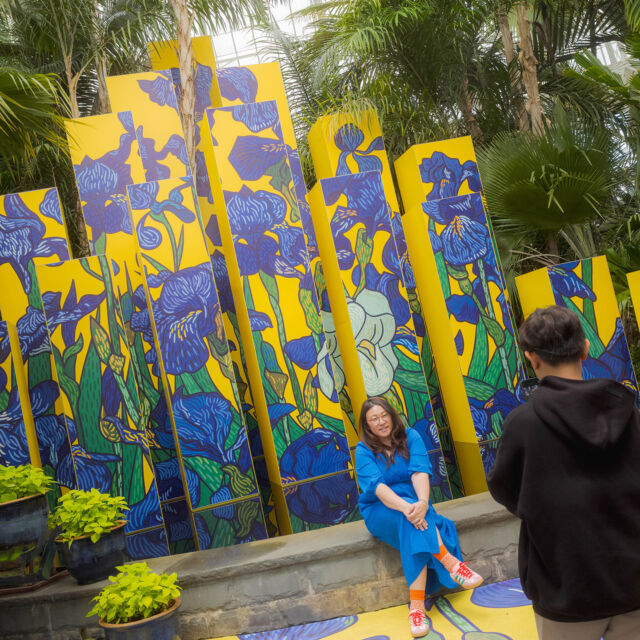Shades of Lavender: Symbolism, Scent, Sightings, and Species
Stephen Sinon is the William B. O’Connor Curator of Special Collections, Research, and Archives in the LuEsther T. Mertz Library at The New York Botanical Garden.

Lavandula angustifolia ‘Munstead’
In honor of Pride Month, The New York Botanical Garden celebrates lavender—the color symbolic of LGBTQ+ resistance and empowerment—as well as the plant’s associated cultural and horticultural history.
Native to the Mediterranean region and beloved for its intoxicating fragrance, there are 47 known species of lavender (Lavandula spp.), a member of the Mint family, Lamiaceae. The Latin root word lavare means “to wash”—a reference to the Roman penchant for using lavender in washing and bathing. It is used widely in perfumes and cosmetics, soaps, and as a flavoring. Lavender is often found in potpourri, sachets, and pillows where its soothing aroma is thought to enhance sleep. Learn more here.

Lavandula angustifolia by German physician and naturalist Leonhart Fuchs
One of the earliest depictions of lavender in NYBG’s LuEsther T. Mertz Library is a beautiful illustration from a wood cut published in 1543 by German physician and naturalist Leonhart Fuchs (1501–66). His New Kreüterbuch features more than 500 plants with medicinal properties, for the purpose of educating fellow doctors in botanical identification in the field through the accuracy of the illustrations. Their clarity raised a new standard for plant illustration; they were reprinted along their descriptions in many different languages for the next 300 years. The botanical genus Fuchsia is named in his honor.
Today scientists working in the field to identify plants around the world can freely access the digital records of 4,300,000 pressed and dried specimens in NYBG’s William and Lynda Steere Herbarium, including this delicate lavender plant collected on the grounds in 2015. These specimens are used to describe and name new species and devise conservation solutions for endangered species.
Toward the end of the 19th century, the public began associating the color lavender with homosexuality, as a blend of gender-associated blue and pink. Aestheticism, a European art and design movement, was founded in 1860 and its proponents eschewed Victorian propriety and moral conformity in favor of beauty, self-expression, and “art for art’s sake.” Irish poet Oscar Wilde, a prominent spokesperson for the movement, often appeared in public wearing lavender-colored clothing. He also adopted the habit of wearing a green carnation in his lapel, which was in turn copied by his circle of friends as a symbol of their affinity with homosexuality. His trial and conviction on charges of homosexuality in 1895 discredited Aestheticism and its followers.

Oscar Wilde wearing a green-dyed carnation
In 1969 Betty Friedan, journalist and co-founder of the National Organization for Women (NOW), called any association of the organization with lesbians “the lavender menace.” However, due to widespread negative reaction to her comment, NOW eventually recognized “lesbian rights as a legitimate concern for feminism.” That same year the Stonewall Riots marked the rise of homosexual empowerment in America. Lavender sashes and armbands were distributed to a crowd of hundreds in a “gay power” march in New York City’s West Village district.
Lavender remains a symbol of LGBTQ+ resistance and empowerment.
June and July are optimum times to see lavender plants in flower at The New York Botanical Garden. You can plan ahead from home or be directed while on-site via PlantTracker, our online catalog of the living collections. You can also learn how to successfully grow lavender in your own backyard using NYBG’s Plant Information Guide, published by the Mertz Library.
Whether the plant or the color, lavender’s rich symbolism and storied history continue to fascinate and engage a wide range of enthusiasts.
SUBSCRIBE
Enter your email address to subscribe to this blog and receive updates on new posts.











